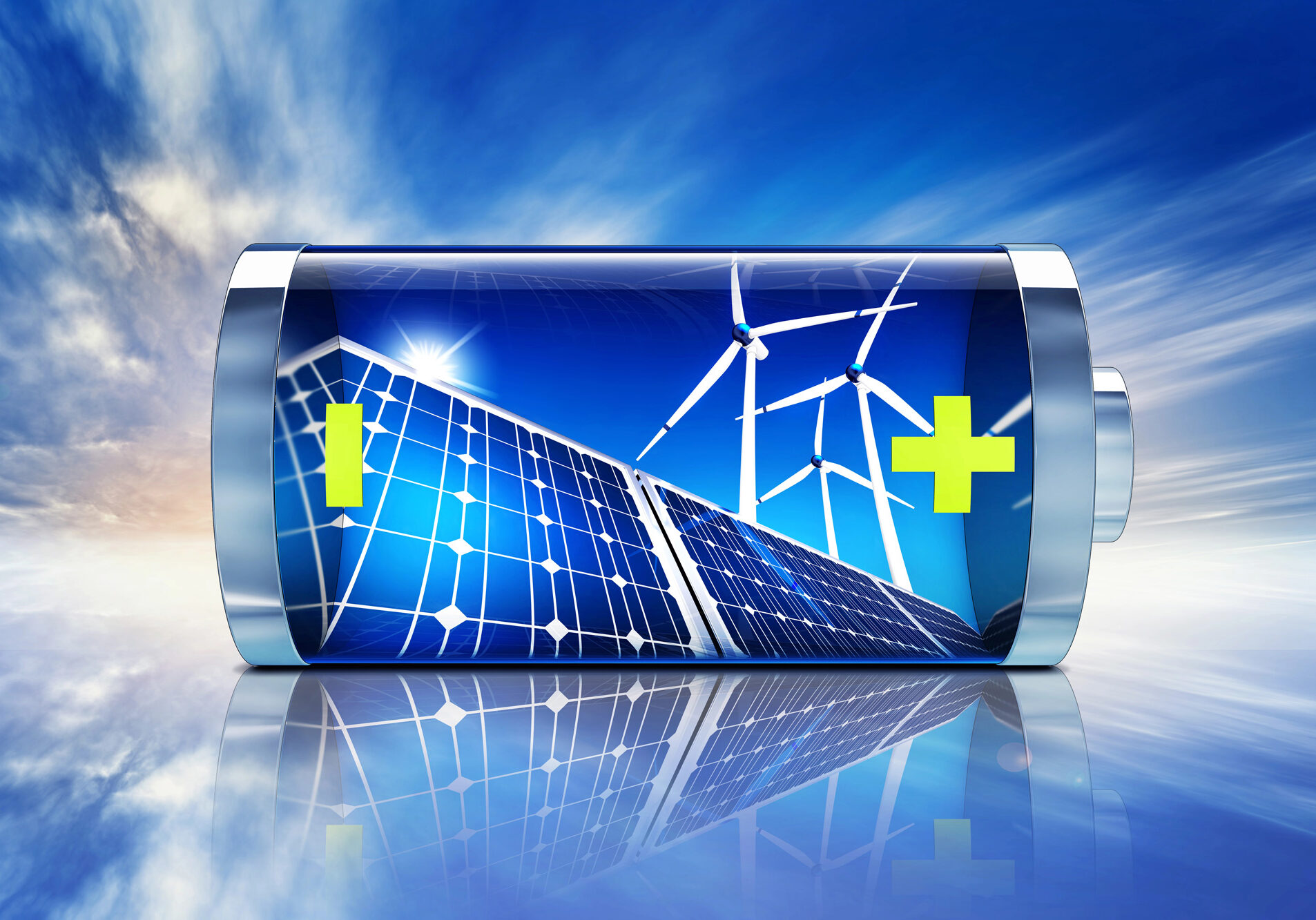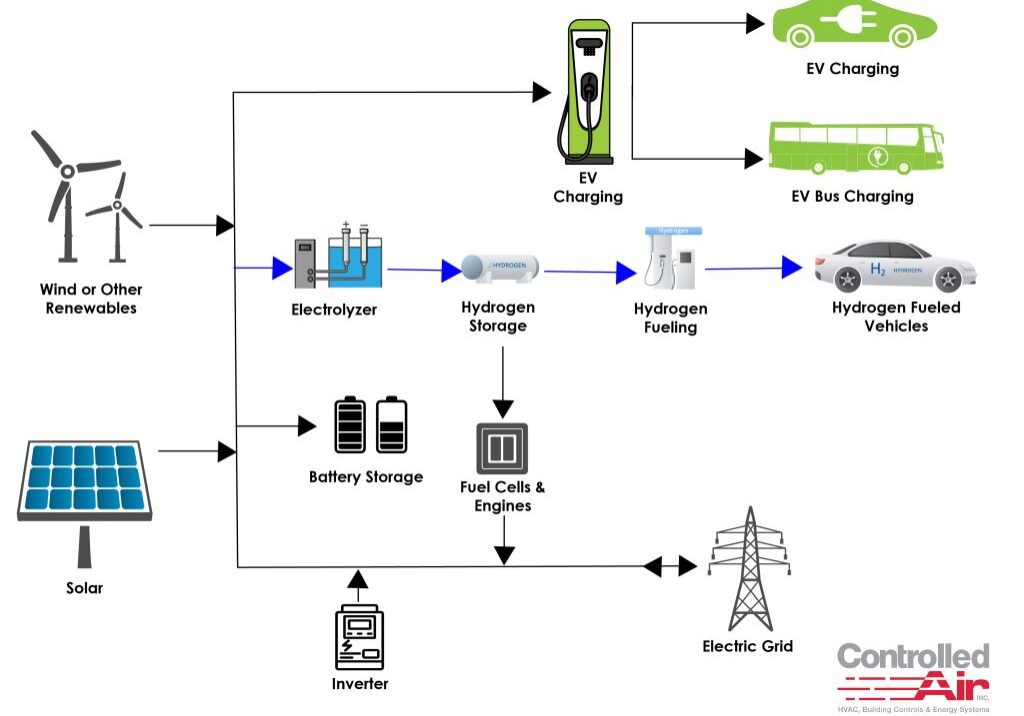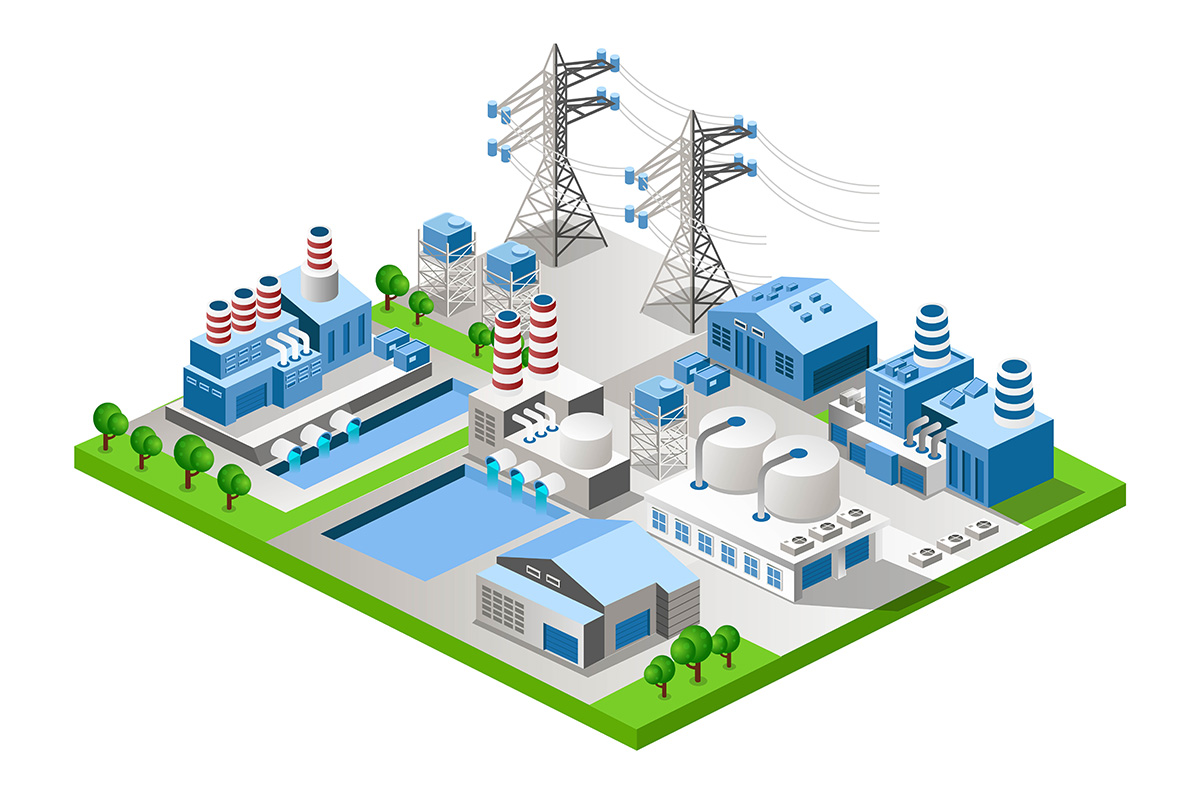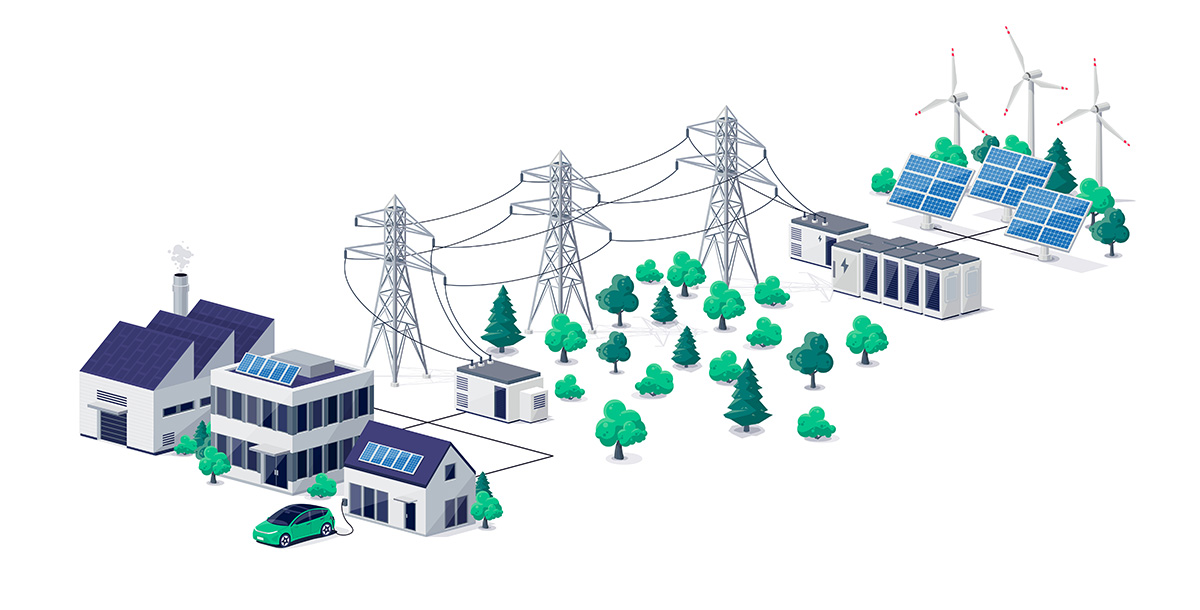QUALITY, RELIABLE, RENEWABLE POWER — NO MATTER WHAT HAPPENS WITH THE GRID
High utility costs and unreliable energy supplies put unnecessary stress on buildings and businesses. That's where microgrids, cogeneration, and connectivity come in. Microgrids are essentially small, localized power grids that can operate independently of the main electrical grid.
Controlled Air uses full scale, miniaturized microgrid systems to manage and incorporate multiple energy technologies to meet the needs of specific customers.
Microgrids typically provide heat and hot water for larger complexes, municipalities, and campuses needing energy.
Nanogrids are used in single buildings where there is high energy use and outages are a concern,
Nanogrids and microgrids are created when cogeneration, solar and batteries are combined with HVAC and controls for a single location. They enable energy independence, running in island mode during blackouts, while fully disconnected from the grid.
Why Microgrids?
Any organization looking to cut costs and increase reliability is a good candidate for microgrids. Microgrids support the electrification trend. Installations are growing rapidly, and they are an excellent solution to today’s infrastructure and energy security challenges. Microgrid solutions create wide scale market opportunities as utilities look for partners.
Nanogrids created for smaller (single building), high energy facilities allow buildings to remain operational during outages and provide heat, hot water, and electricity for daily use. Nanogrids are by nature modular and scalable. They can be expanded and/or incorporated into larger systems in the future as needed.
Talk to one of our experts about available grants and incentives.

Key Components
- Local Power Sources
- Renewable Energy:
- Solar panels
- wind turbines
- geothermal sources
- Traditional Generators:
- Diesel
- natural gas
- Energy Storage:
- Batteries
- fuel cells
- Renewable Energy:
- Control System

On-site electricity generation
- Independent control
- Remote power
- Blackout start
- Smart battery management
- Electric vehicle charging capable
- Sustained occupancy
- Emergency generation (life safety emergency generator system)

Environmentally responsible
- Reduce energy costs up to 50%
- Increase energy efficiency and reduce GHG emissions
- Solar and net-metering enabled
- Single building microgrids/nano grids
Who Can Benefit from Micro/Nanogrid Energy Solutions
- Single buildings – Nanogrids can be the most profitable option since there is less oversight, fewer regulations and fewer negotiations with utilities than with larger microgrids
- Hybrid technology solution candidates – Commercial enterprises who want significant savings, a smaller footprint, and greater energy independence
- Older building retrofits – Any business wanting to cut costs and increase reliability: the older the building, the greater the improvement.
- New construction – Create an optimal solution without added redesign costs when you lay the groundwork early with your architects and our design team
Grid Mode
The microgrid operates normally, drawing power from the main grid when needed and potentially selling excess renewable energy back to the grid.


Island mode
Operates continuously and provides blackstart operation during grid outages.
- Control system senses change and switches to island mode
System manages load transfer - Gaps are bridged using battery storage
- Island-capable systems can maintain heat and power service to loads within microgrid network during outages and fulfill load-shedding requests during high-demand periods
Benefits
- Increased Reliability: Reduced dependence on the main grid minimizes the impact of power outages.
- Improved Resilience: Essential services like hospitals and data centers can maintain operations during grid disruptions.
- Energy Independence: Reduces reliance on the centralized grid and can increase self-sufficiency.
- Cost Savings: Can reduce energy costs by optimizing energy use and utilizing cheaper local power sources.
- Environmental Benefits: Can integrate more renewable energy sources, reducing carbon emissions.

See our completed projects
Controlled Air can help your commercial, industrial, or municipal enterprise increase energy reliability, quality, and independence with a fast ROI.
Visit our online customer showcase to see our completed work.
